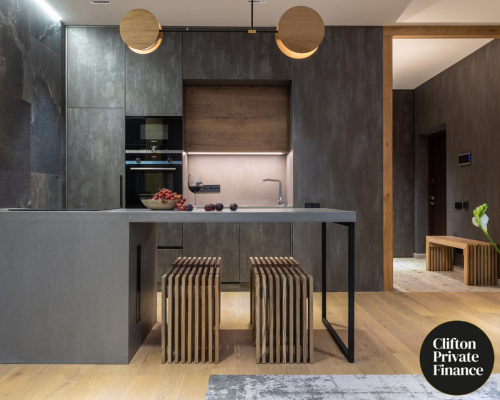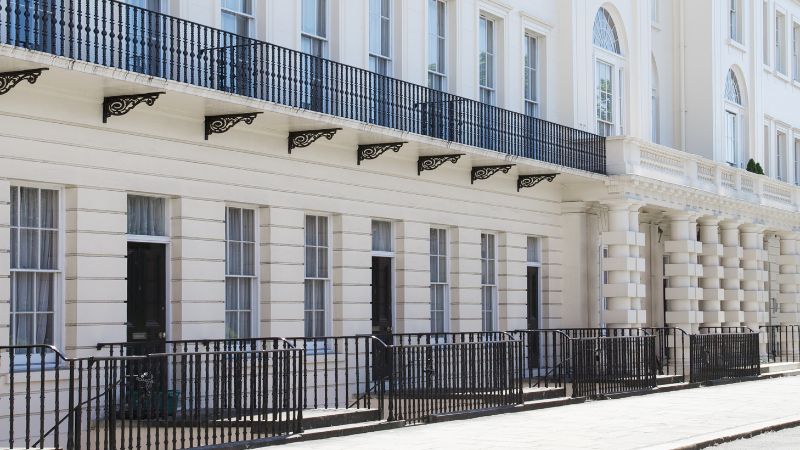Categories
Let-to-Buy Mortgage | What You Should Know

If you are looking to rent out your home and buy another property to live in, then a let-to-buy mortgage is the perfect product.
Designed to switch your mortgage from a standard residential mortgage to a landlord-appropriate buy-to-let, and allowing you to obtain a residential mortgage for a new property, let-to-buy is a fantastic solution for people whose life changes direction midway through their mortgage term.
Find the Perfect Let-To-Buy Mortgage
What is a Let-to-Buy Mortgage?
A let-to-buy mortgage converts an existing residential mortgage to a buy-to-let mortgage, giving you the legal freedom to both rent out your previous home and get a new residential mortgage for a new house.
Ensuring that you have the right mortgage for your purpose is essential.
The terms and conditions surrounding mortgages are very specific, ensuring that properties (and the mortgages associated with them) are used in the proper way.
Some of the different types of mortgages include:
- Residential mortgage - Used to purchase a property that you are living in, standard residential mortgages are repayment mortgages, designed to be paid off over the mortgage term, offer low interest rates, and have exceptional loan-to-value (LTV) percentages to help you buy a home in the UK. You cannot rent out a property that is attached to a residential mortgage.
- Buy-to-let mortgage - Designed as an option for landlords, a buy-to-let mortgage allows you to buy a second property after your residential home with the intention that it is rented out for profit. Buy-to-let mortgages are often interest-only mortgages, though they can also be repayment mortgages. You cannot live in a property that has been purchased with a buy-to-let mortgage.
- Interest-only mortgage - These mortgages are typically designed for investment purposes, with low monthly repayments that cover only the interest on the mortgage loan. At the end of the term, the full principal of the mortgage must be repaid, typically by selling the property.
- Repayment mortgage - This mortgage type has a larger monthly payment that is made up of the accrued interest plus a repayment towards the principal. At the end of the mortgage term, a repayment mortgage is repaid in full and the property is fully owned by the mortgagee.
- Commercial mortgage - Businesses looking to purchase property for use as an office, warehouse, shop, or other business use will need to look to a commercial mortgage. Commercial mortgages may be interest-only or repayment types, but will typically have lower LTV percentages than residential mortgages.
- Mixed-use mortgage - A mortgage that combines a commercial mortgage with a residential mortgage, mixed-use mortgages are perfect for buying properties that are both business and home, such as a pub or shop with an upper level flat.
Find the Perfect Let-to-Buy Mortgage »
Who is a Let-to-Buy Mortgage For?
Why would you use a let-to-buy mortgage? Let’s look at 6 example circumstances:

New addition to the family
One situation that triggers a desire for a let-to-buy mortgage is when your family circumstances change though a baby on the way.
In these cases, the smaller home that you’ve been living in may no longer be suitable and it’s time to upgrade. While many people are happy to sell their first home and move to a larger house, you might want to keep your smaller property as an investment and rent it out to tenants.
Let-to-buy provides this opportunity, converting your existing mortgage and letting your family obtain a new mortgage for the future.

Becoming a couple
If you and your partner decide to move in together and you both already own a property, what do you do? Of course, you could both sell up and use the money to get something for you both, but another option is to convert one or both of your existing properties though a let-to-buy and then get a new joint mortgage for the shared home.
Or, one of you could move in with the other, and just the vacant property could be let out. Either way, a let-to-buy mortgage is the perfect solution.

A short- or medium-term temporary move
Opportunities sometimes come up in life that need a temporary relocation - perhaps there’s a new job somewhere else in the country.
In these cases, you might want to purchase a new home elsewhere rather than renting, with the idea that one day you’ll move back to the family home - but what to do in the meantime? A let-to-buy mortgage allows you to rent out the family home while you’re not in it, but it remains yours to return to in the future.
You buy a new home now in the temporary location and when you’re moving back, a let-to-buy on that property will give you the perfect way to swap back!

Separating couples
It could be that you are all moving out of the family home due to a separation, but you do not want to lose the investment in that property.
In that case, a let-to-buy allows you to finance a new home while renting out the old one.
In some amicable circumstances, the tenant in the old home might be your ex-partner, who keeps their home while paying you rent for the foreseeable future. Divorce can lead to some complicated scenarios for which let-to-buy provides an additional option.

Find the Perfect Let-to-Buy Mortgage »
You like the idea of becoming a landlord
One further use of a let-to-buy mortgage is simply because you want to move into the landlord space and feel renting out your current home is the best way to do that - after all, you know all its quirks and can better cope with any maintenance issues than a property with which you’ve never had any personal experience.
Taking the first steps to being a landlord through a let-to-buy is a well-considered decision for many.

It’s the wrong time to sell
Analysing the housing market and determining the best time to sell means you may want to move away but hold on to your existing home for a while yet; or you may be struggling to sell it in current market conditions.
A let-to-buy mortgage opens up opportunities where you would otherwise feel stuck, either having to accept an offer you’re not completely happy with, or remaining in a home you are wanting to leave.
How Does the Let-to-Buy Mortgage Process Work?
Engaging into a let-to-buy mortgage is a multi-stage process that is best done with expert advice.
The mortgage team at Clifton Private Finance have all the expertise you need to navigate the complexities of the system while ensuring that you get the best mortgage rates on the market.
If you’re looking to rent out your existing home, speak to us today.
Here's how the process works in 5 steps:

Stage One - Evaluating Your Situation
The first step is to understand your financial situation and the options available to you.
One of the major advantages of a let-to-buy mortgage is that it allows you to leverage your existing equity in your property to purchase a new home, avoiding the need for a cash deposit; so it’s important to calculate what that is and how it affects your choices.
The Debt Obligations
When you use a let-to-buy, you end up with two mortgages.
While you will have tenants to cover the buy-to-let mortgage on the rental property, there will likely be dry spells when the property is between tenants and you still have to pay both mortgages. Having the income to support this increased outgoing is essential to avoid future financial problems.

Stage Two - The Mortgage Applications
Getting the best rates and organising the let-to-buy is best done with the professional help of a trusted mortgage broker. Don’t forget to speak to Clifton Private Finance to ensure you are getting the right deal!
With your mortgage broker helping, the next stage is to get the paperwork in place and make the appropriate mortgage applications.
Assessing the Rental Income
If the let-to-buy is an interest-only mortgage, then this will be easier to obtain, as the monthly repayments will be relatively low; however, many let-to-buy arrangements are repayment mortgages as people are typically keen to continue paying back the principal of their mortgage and one day own the property in full.
This means rental pricing needs to be well-considered to cover the higher monthly mortgage repayment.
Remember, you will need to cover the mortgage as well as any maintenance or other problems that occur, and if you are planning to use a rental agent, there are additional fees for their services.
Buying a New Residential Home
A let-to-buy mortgage means multiple things are going on at once. While you are organising your new status as a landlord, you are also buying a new home! You will need to find a new home, obtain an agreement-in-principle, and put in an offer.
This will mean credit and affordability checks to ensure your finances can handle the additional load.
It is also important to consider Stamp Duty Land Tax, which is more considerable on a second property than when simply selling your home to buy another.
Find the Perfect Let-to-Buy Mortgage »
Valuations
Multiple valuations and surveys must take place: one on the current property for the let-to-buy mortgage, and one on the new property as part of the residential mortgage.


Stage Three - Buying the New Home
With everything in place, you can purchase your new home and move in, taking your possessions out of the old property and getting it ready for rental.

Stage Four - Becoming a Landlord
You will want to get tenants into your old home as quickly as possible. You can do this privately, but it’s often best to work through a letting agent - especially if you are a new landlord. Find a letting agent you like and ensure you understand their fee structure and the limitations of their involvement.
Landlord Obligations
Becoming a landlord has more to it than simply owning a property with the right type of mortgage associated with it - you are now legally required to ensure your property meets safety standards and is appropriately insured. Your letting agent will help here if you have one, otherwise you will need to do the appropriate research and make sure you’re doing it all right.

Stage Five - The Ongoing Finances
The final stage is the next few years of managing your finances as a landlord and property owner.
Remember to consider all of the following:
- Managing and paying two (or more) mortgages per month.
- Ensuring all the appropriate insurance is paid and up to date, including life insurance to cover the mortgages.
- Accepting there will be dry spells when you have no tenants and thus no rental income.
- Having the money put aside to cover maintenance on your rental property as soon as needs arise.
- Paying for annual inspections and safety checks.
Let-to-Buy Mortgage Pros and Cons
As with any financial product, there are advantages and disadvantages with a let-to-buy mortgage. Consider the following:
Pros
- Ability to leverage your equity in the current home to buy a new home without selling up.
- Keep the investment in an original home.
- Option to return to your original home at a later date.
- Profit from becoming a landlord.
- Avoid delays in selling property before moving.
Cons
- Two mortgage payments to be managed.
- Costs, both financial and logistical, of becoming a landlord.
- Higher level of stamp duty on purchasing new home.
How to Apply
If you are looking to obtain a let-to-buy mortgage, look to Clifton Private Finance. Our expert team have the experience you need to navigate the complex mortgage landscape and can help you find a mortgage deal with the best rates available.
Do you need to move faster to secure your dream home?
A bridging loan puts you in the position of a cash buyer, with short-term property finance available in as little as a few days. It’s then repaid when an ongoing sale completes, or when you secure a standard mortgage in its place.
Contact us today to speak to a broker about your specific circumstances.
.png)











